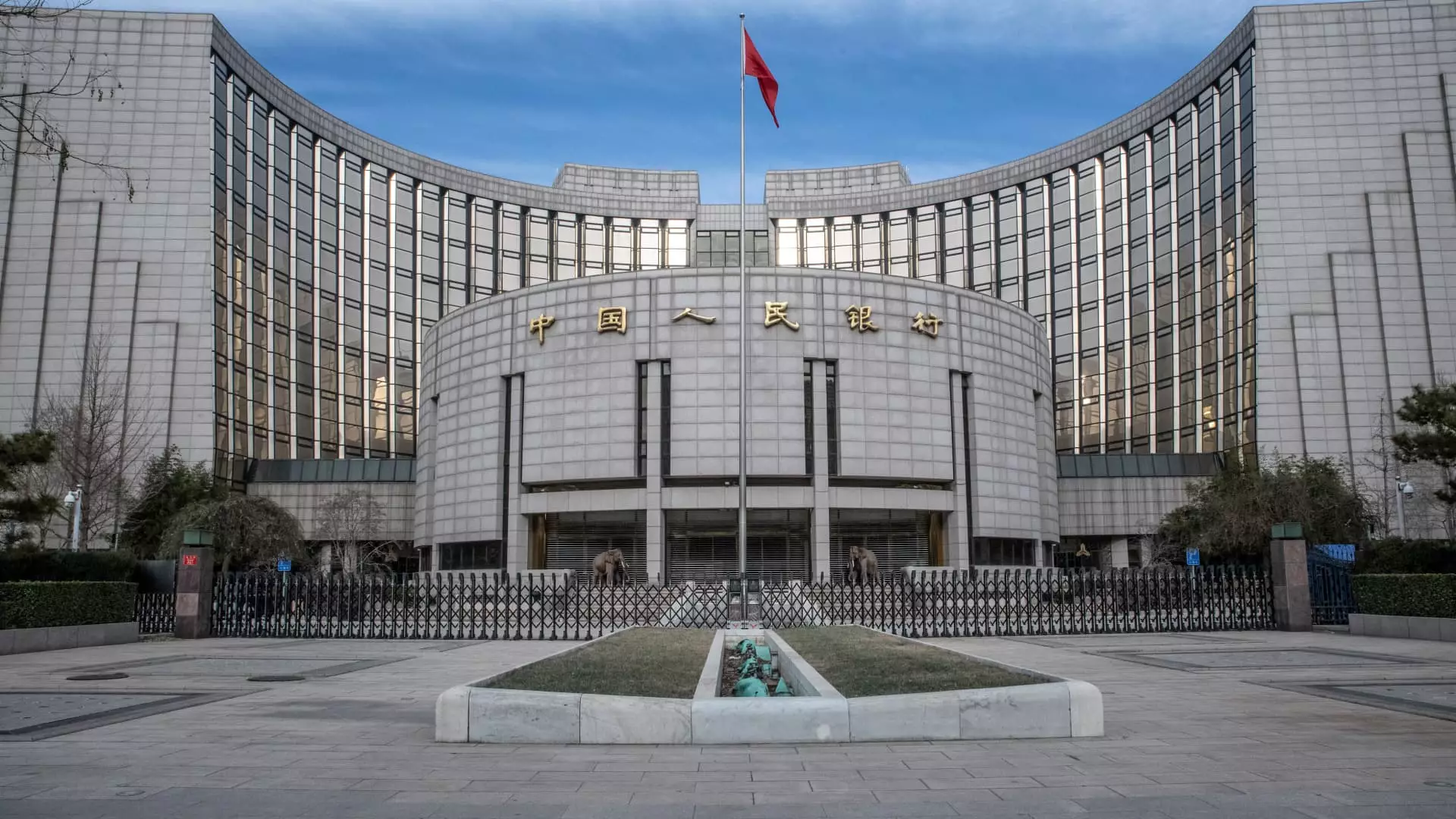On a pivotal day for China’s financial landscape, the People’s Bank of China (PBOC) made the decision to maintain its key lending rates, leaving the one-year loan prime rate at 3.1% and the five-year loan prime rate at 3.6%. This choice comes in the wake of numerous economic challenges that have plagued the nation, prompting analysts and economists to scrutinize the implications of this sustained monetary policy. The PBOC’s pause reflects both a cautionary approach to interest rate adjustments and the backdrop of ongoing stimulus measures that have yet to yield significant results.
Despite the government’s recent push to rejuvenate the floundering economy, the latest economic data has illuminated stark challenges. October’s industrial production and fixed asset investment figures fell short of expectations, signaling a lack of robust momentum. Moreover, the decline in real estate investment over the first ten months of the year deepened compared to the previous year, illustrating the continued turmoil in one of China’s vital sectors. While retail sales saw a modest increase of 4.8% year-on-year, indicating that some benefits from stimulus measures are beginning to materialize, the overall economic outlook remains precarious.
This hesitance in the economy, characterized by weak consumer and business confidence, has led to the central bank’s cautious stance. Bruce Pang, chief economist at JLL, articulated that there is “no immediate need to adjust the LPR this month,” suggesting that policymakers are still evaluating the effectiveness of their recent interventions before taking any further action.
Understanding the Central Bank’s Position
The decision to keep the lending rates steady is a critical component of the PBOC’s strategy as it navigates the complexities of the current economic climate. Record-low net interest margins are constraining commercial banks, limiting their capacity to lower lending rates without compromising their financial stability. This scenario raises questions about whether further reductions in policy rates are viable. While some analysts predict potential cuts in 2025, the immediate horizon appears to be characterized by stability rather than aggressive intervention.
The central bank’s approach is particularly relevant given the recent fiscal measures announced by the Ministry of Finance, which unveiled a substantial fiscal package aimed at addressing local government debt, amounting to 10 trillion yuan (approximately $1.4 trillion). This initiative is a clear indication of the government’s commitment to bailing out struggling sectors and providing economic support.
Forecasting Economic Growth
Projections surrounding China’s economic growth paint a picture of cautious pessimism. Analysts from Morgan Stanley anticipate a slowdown to around 4% annual growth over the next two years, primarily due to external pressures such as rising trade tensions and a deflationary environment. Similarly, Goldman Sachs has adjusted its growth forecasts downward, predicting a decline to 4.5% in 2025, reflecting an overarching trend of lackluster performance despite expansive fiscal policies.
These forecasts echo a growing sentiment that the Chinese government’s current fiscal stimuli may not suffice to spur a significant turnaround, particularly in the consumer and housing markets, which are crucial for sustained economic vitality. As such, investors are closely monitoring these developments, with some financial institutions adjusting their equity strategies in light of the projected downturn.
Adding another layer of complexity to this economic landscape is the geopolitical climate surrounding China. The potential re-election of Donald Trump, with its attendant risks of increased tariffs on Chinese exports, could further compound the pressures faced by the export-driven economy. Thus, the interplay between domestic policy measures and international relations remains a crucial factor influencing China’s economic trajectory.
China’s decision to maintain its lending rates amidst ongoing economic challenges underscores the delicate balance it must strike as it seeks recovery. While recent fiscal stimulus efforts demonstrate a proactive approach to addressing economic weaknesses, the actual impact remains to be fully realized. As financial analysts and economists grapple with the implications of these forthcoming trends, it is evident that the PBOC’s next steps will be critical in shaping the future of China’s economy. The interplay between domestic initiatives and external pressures will undoubtedly continue to warrant close attention in the coming months.

Leave a Reply